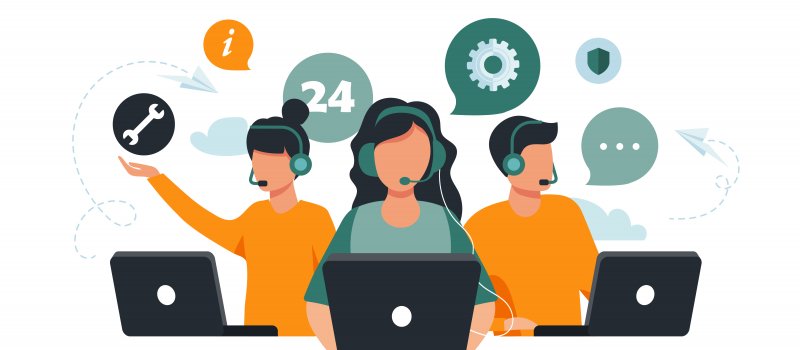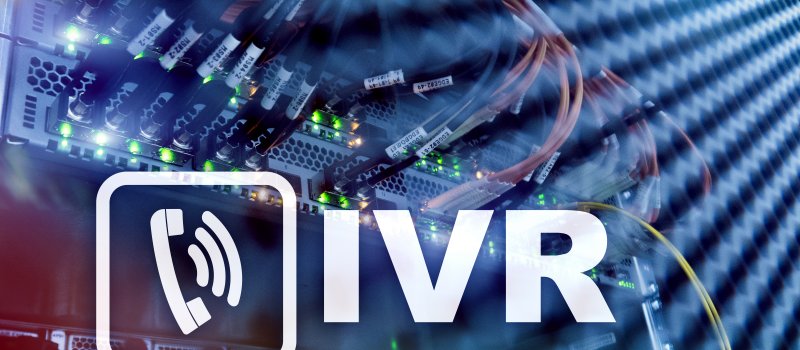Customer service automation is a fantastic way to streamline workflows and give your employees more time to focus on customers. For those reasons and more, Gartner predicted that 85% of companies will be increasing automation by 2025.
This means if you haven’t adopted automation into your contact center and other communications, you could end up falling behind. One fundamental feature of customer service automation is automated call routing.
Why is this system better than a human operator at providing personalized customer interactions? Discover how automated call routing works and why you need it.
Key Takeaways:
- An automated call routing system automatically directs your calls to the appropriate contact center agents.
- Call routing uses preprogrammed rules for qualifying, queuing, and distributing calls.
- Modern contact center solutions make it easy for anyone to program their call routing system.
- Automated call routing results in happier customers, a lower abandonment rate, and a more productive workforce.
What Is Automated Call Routing?
Automated call routing is a technology that queues and transfers your incoming calls to the appropriate agents or teams. You might also hear people refer to this system as automatic call distribution, or ACD.
While automated call routing is a necessary feature for large contact centers, smaller operations can also benefit from a call distribution system. Fortunately, modern cloud-based communications means it’s no longer necessary to have IT professionals program call routing for you. Everyday users can use intuitive dashboards to set up their routing system.
How Does ACD Work?
The automated call routing process has three phases.
1. Call Qualifying
First, your system has to determine your callers’ reasons for contacting you. The automated call routing service can do this with an interactive voice response system. With IVR, callers select an option from a menu using either their keypad or a vocal response.
Additionally, you can also qualify calls with information from the caller ID, your customer relationship management software, and which business number the person called. For example, a call from a certain area code might indicate a caller is more likely to speak a specific language.
2. Call Queuing
Once you know why someone is calling, your system can put the individual in the appropriate queue. The caller will sit on hold until someone in the right department can pick up.
3. Call Distributing
Automatic call routing does more than get the call to the right department. Using the details from the qualifying phase, your routing software will follow your preset rules to transfer the call to the person who can serve them best.

What Types of Automated Call Routing Rules Can You Use?
The rules you set up determine which agents get calls so you can provide top-level customer service.
Round-Robin
With round-robin routing, you can evenly distribute calls among your agents. Your automated call routing software has a list of agents and sends each one a caller in order before rotating through your agents again.
Uniform
Uniform routing is similar to round-robin in that it tries to distribute the workload evenly. However, this arrangement sends callers to the agent who has had the most idle time or lowest talk time. This system is a good way to prevent burnout on the team.
Time-Based
The time-based system forwards calls to agents in the same or nearby time zone as the person calling. When you have a nationwide or international market, this setup ensures callers receive attention from a team where someone is more likely to be alert and available.
Skills-Based
A great way to boost first contact resolution rates is with skill-based routing. When customers indicate to the IVR that they have more complex issues to handle, automatic call routing sends the caller to someone with the appropriate ability and authorization to handle the issue. This avoids passing the call through various employees, wasting their and your customer’s time.
VIP or Relationship-Based
If you have customers you want to prioritize, VIP routing is for you. You can set your system up to always answer those callers with special privileges first.
You might also assign certain relationship managers to specific customers who require or deserve extra attention. This can help you better attend to the 20% of customers who deliver 80% of your profits.
AI-Assisted Predictive Behavior
Artificial intelligence provides new ways to improve call routing. Machine learning can surmise which agent can serve a caller the best with live and historical contact center data. Of course, you can also use this information and analytics to determine who your top agents are and reward or incentivize them accordingly.
What Are the Advantages of Using Automated Call Routing?
Automated call routing delivers multiple benefits to your team.
Happier Customers
Your callers will appreciate resolving their issues more quickly and having better all-around interactions with agents. Customers will deal with shorter wait times, and you’ll likely see your customer satisfaction scores increase.
More Productive and Efficient Workforce
You won’t have to worry about agents sitting idle or overworked team members — two issues that can translate directly into employee burnout and high turnover. By streamlining your workflows with automated call routing technology, you’ll gain a more engaged and efficient workforce.
Plus, your contact center software continually logs your stats and key performance indicators and provides a user-friendly dashboard for analysis. The data from transactions helps you determine which are the best automated call routing rules and how to schedule team members for the greatest efficiency.

Lower Abandonment Rates
Callers who drop off the line may eventually turn to your competitors. A better customer experience with automated call routing means fewer abandoned calls, fewer callbacks, and lower customer churn.
How Can You Quickly Set Up Automated Call Routing?
Automated call routing has an outstanding number of features your customers want. Fortunately, with the right system, you don’t have to go out and find new software to add to your contact center platform to benefit from these advantages. Top cloud contact center solutions include state-of-the-art call routing.
Contact us at Intermedia to find out how Intermedia Contact Center makes automated call routing a breeze.
March 13, 2024
Explore other posts on these topics: Contact Center




